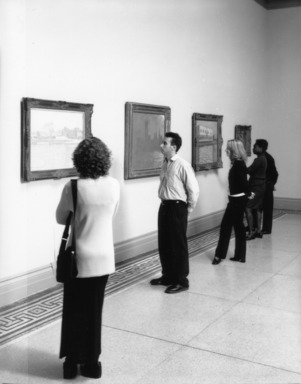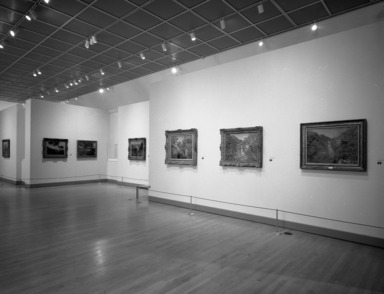

Monet and the Mediterranean, October 10, 1997 through January 4, 1998 (Image: PHO_E1997i067.jpg Brooklyn Museum. Justin van Soest,er photograph, 1997)
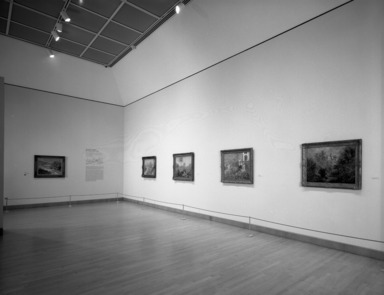
Monet and the Mediterranean, October 10, 1997 through January 4, 1998 (Image: PHO_E1997i068.jpg Brooklyn Museum. Justin van Soest,er photograph, 1997)
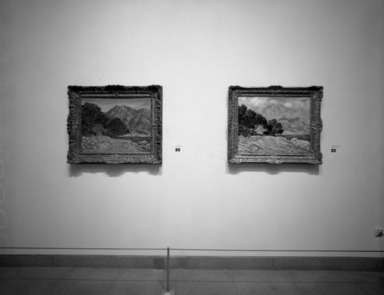
Monet and the Mediterranean, October 10, 1997 through January 4, 1998 (Image: PHO_E1997i069.jpg Brooklyn Museum. Justin van Soest,er photograph, 1997)

Monet and the Mediterranean, October 10, 1997 through January 4, 1998 (Image: PHO_E1997i070.jpg Brooklyn Museum. Justin van Soest,er photograph, 1997)
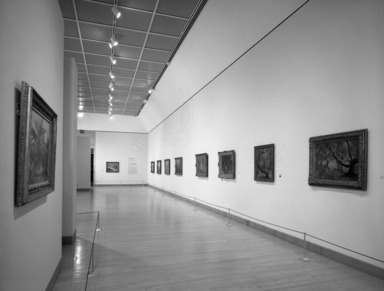
Monet and the Mediterranean, October 10, 1997 through January 4, 1998 (Image: PHO_E1997i071.jpg Brooklyn Museum. Justin van Soest,er photograph, 1997)
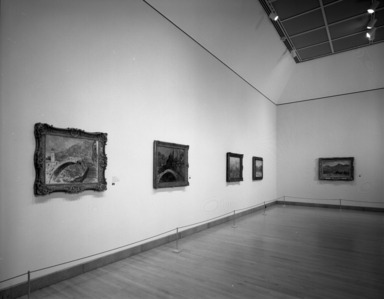
Monet and the Mediterranean, October 10, 1997 through January 4, 1998 (Image: PHO_E1997i072.jpg Brooklyn Museum. Justin van Soest,er photograph, 1997)

Monet and the Mediterranean, October 10, 1997 through January 4, 1998 (Image: PHO_E1997i073.jpg Brooklyn Museum. Justin van Soest,er photograph, 1997)
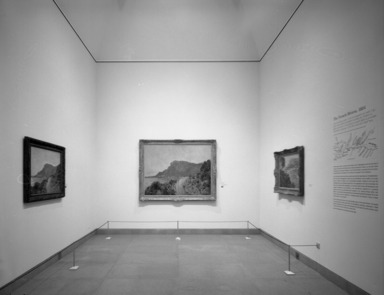
Monet and the Mediterranean, October 10, 1997 through January 4, 1998 (Image: PHO_E1997i074.jpg Brooklyn Museum. Justin van Soest,er photograph, 1997)

Monet and the Mediterranean, October 10, 1997 through January 4, 1998 (Image: PHO_E1997i075.jpg Brooklyn Museum. Justin van Soest,er photograph, 1997)
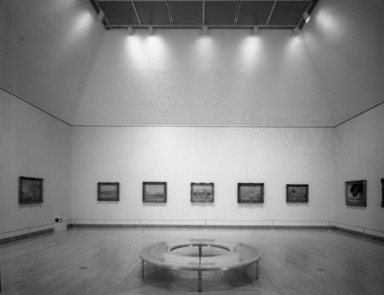
Monet and the Mediterranean, October 10, 1997 through January 4, 1998 (Image: PHO_E1997i076.jpg Brooklyn Museum. Justin van Soest,er photograph, 1997)

Monet and the Mediterranean, October 10, 1997 through January 4, 1998 (Image: PHO_E1997i077.jpg Brooklyn Museum. Justin van Soest,er photograph, 1997)

Monet and the Mediterranean, October 10, 1997 through January 4, 1998 (Image: PHO_E1997i078.jpg Brooklyn Museum. Justin van Soest,er photograph, 1997)
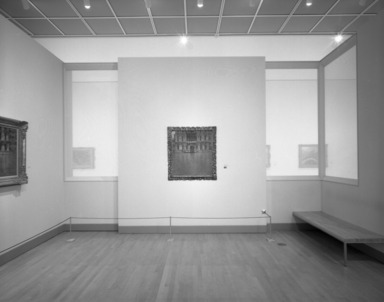
Monet and the Mediterranean, October 10, 1997 through January 4, 1998 (Image: PHO_E1997i079.jpg Brooklyn Museum. Justin van Soest,er photograph, 1997)
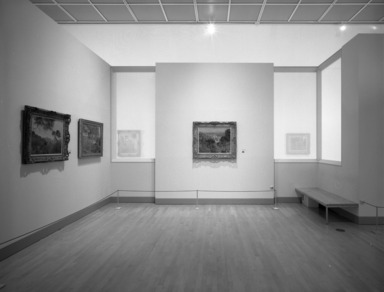
Monet and the Mediterranean, October 10, 1997 through January 4, 1998 (Image: PHO_E1997i080.jpg Brooklyn Museum. Justin van Soest,er photograph, 1997)
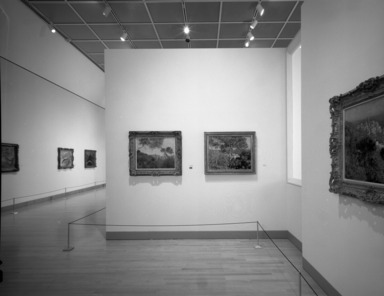
Monet and the Mediterranean, October 10, 1997 through January 4, 1998 (Image: PHO_E1997i081.jpg Brooklyn Museum. Justin van Soest,er photograph, 1997)

Monet and the Mediterranean, October 10, 1997 through January 4, 1998 (Image: PHO_E1997i082.jpg Brooklyn Museum. Justin van Soest,er photograph, 1997)
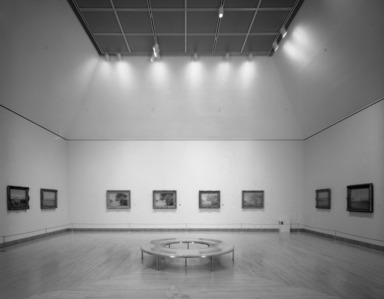
Monet and the Mediterranean, October 10, 1997 through January 4, 1998 (Image: PHO_E1997i083.jpg Brooklyn Museum. Justin van Soest,er photograph, 1997)
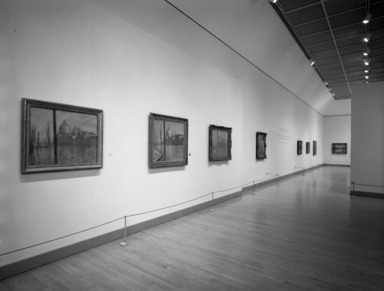
Monet and the Mediterranean, October 10, 1997 through January 4, 1998 (Image: PHO_E1997i084.jpg Brooklyn Museum. Justin van Soest,er photograph, 1997)
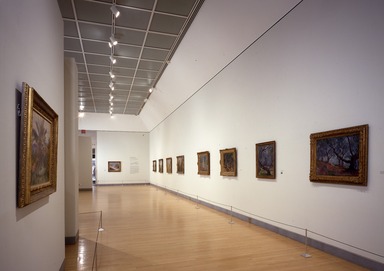
Monet and the Mediterranean, October 10, 1997 through January 4, 1998 (Image: PSC_E1997i001.jpg Brooklyn Museum. Justin van Soest,er photograph, 1997)

Monet and the Mediterranean, October 10, 1997 through January 4, 1998 (Image: PSC_E1997i002.jpg Brooklyn Museum. Justin van Soest,er photograph, 1997)

Monet and the Mediterranean, October 10, 1997 through January 4, 1998 (Image: PSC_E1997i003.jpg Brooklyn Museum. Justin van Soest,er photograph, 1997)
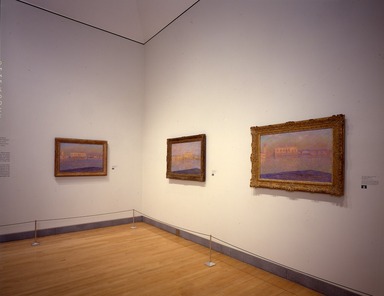
Monet and the Mediterranean, October 10, 1997 through January 4, 1998 (Image: PSC_E1997i004.jpg Brooklyn Museum. Justin van Soest,er photograph, 1997)

Monet and the Mediterranean, October 10, 1997 through January 4, 1998 (Image: PSC_E1997i005.jpg Brooklyn Museum. Justin van Soest,er photograph, 1997)
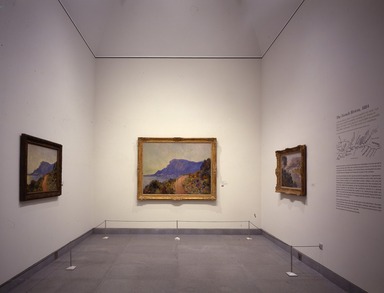
Monet and the Mediterranean, October 10, 1997 through January 4, 1998 (Image: PSC_E1997i006.jpg Brooklyn Museum. Justin van Soest,er photograph, 1997)
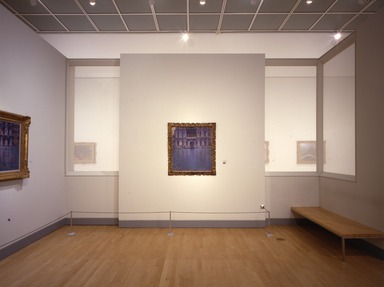
Monet and the Mediterranean, October 10, 1997 through January 4, 1998 (Image: PSC_E1997i007.jpg Brooklyn Museum. Justin van Soest,er photograph, 1997)

Monet and the Mediterranean, October 10, 1997 through January 4, 1998 (Image: PSC_E1997i008.jpg Brooklyn Museum. Justin van Soest,er photograph, 1997)
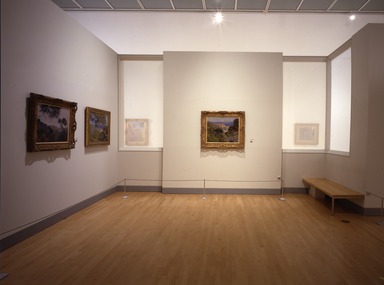
Monet and the Mediterranean, October 10, 1997 through January 4, 1998 (Image: PSC_E1997i009.jpg Brooklyn Museum. Justin van Soest,er photograph, 1997)
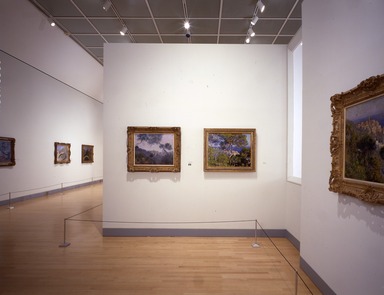
Monet and the Mediterranean, October 10, 1997 through January 4, 1998 (Image: PSC_E1997i010.jpg Brooklyn Museum. Justin van Soest,er photograph, 1997)
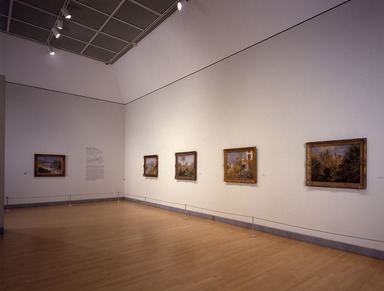
Monet and the Mediterranean, October 10, 1997 through January 4, 1998 (Image: PSC_E1997i011.jpg Brooklyn Museum. Justin van Soest,er photograph, 1997)
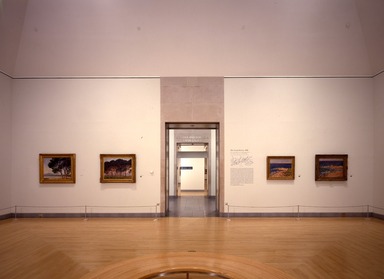
Monet and the Mediterranean, October 10, 1997 through January 4, 1998 (Image: PSC_E1997i012.jpg Brooklyn Museum. Justin van Soest,er photograph, 1997)
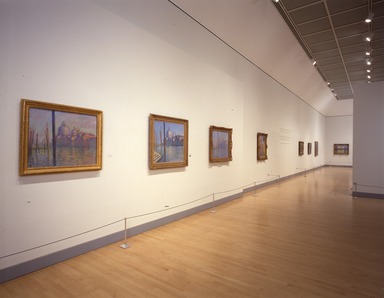
Monet and the Mediterranean, October 10, 1997 through January 4, 1998 (Image: PSC_E1997i013.jpg Brooklyn Museum. Justin van Soest,er photograph, 1997)
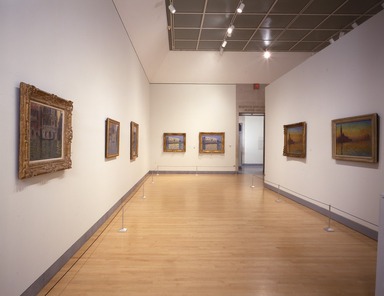
Monet and the Mediterranean, October 10, 1997 through January 4, 1998 (Image: PSC_E1997i014.jpg Brooklyn Museum. Justin van Soest,er photograph, 1997)

Monet and the Mediterranean, October 10, 1997 through January 4, 1998 (Image: PSC_E1997i015.jpg Brooklyn Museum. Justin van Soest,er photograph, 1997)
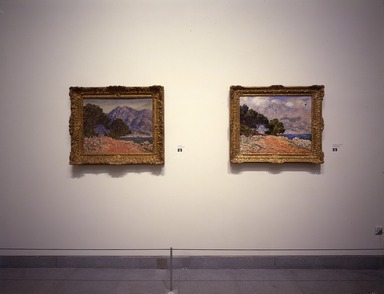
Monet and the Mediterranean, October 10, 1997 through January 4, 1998 (Image: PSC_E1997i016.jpg Brooklyn Museum. Justin van Soest,er photograph, 1997)
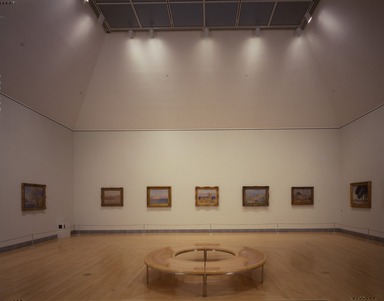
Monet and the Mediterranean, October 10, 1997 through January 4, 1998 (Image: PSC_E1997i017.jpg Brooklyn Museum. Justin van Soest,er photograph, 1997)
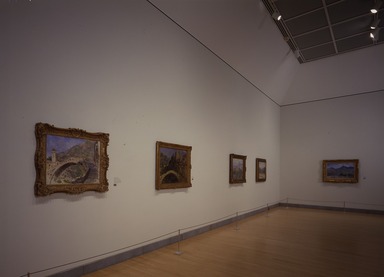
Monet and the Mediterranean, October 10, 1997 through January 4, 1998 (Image: PSC_E1997i018.jpg Brooklyn Museum. Justin van Soest,er photograph, 1997)

Monet and the Mediterranean, October 10, 1997 through January 4, 1998 (Image: PSC_E1997i019.jpg Brooklyn Museum. Justin van Soest,er photograph, 1997)
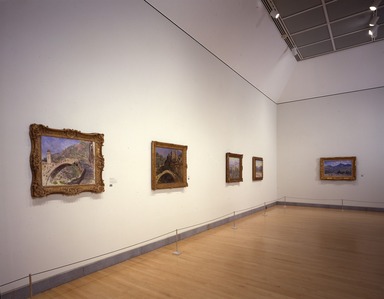
Monet and the Mediterranean, October 10, 1997 through January 4, 1998 (Image: PSC_E1997i020.jpg Brooklyn Museum. Justin van Soest,er photograph, 1997)

Monet and the Mediterranean, October 10, 1997 through January 4, 1998 (Image: PSC_E1997i021.jpg Brooklyn Museum. Justin van Soest,er photograph, 1997)
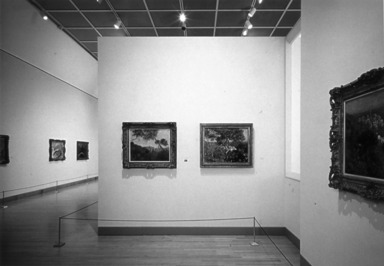
Monet and the Mediterranean, October 10, 1997 through January 4, 1998 (Image: PSC_E1997i022.jpg Brooklyn Museum. Justin van Soest,er photograph, 1997)

Monet and the Mediterranean, October 10, 1997 through January 4, 1998 (Image: PSC_E1997i023.jpg Brooklyn Museum. Justin van Soest,er photograph, 1997)
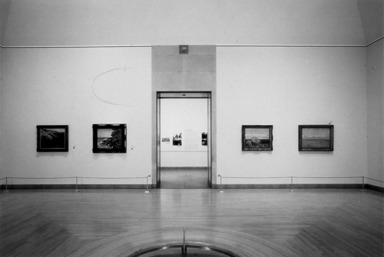
Monet and the Mediterranean, October 10, 1997 through January 4, 1998 (Image: PSC_E1997i024.jpg Brooklyn Museum. Justin van Soest,er photograph, 1997)
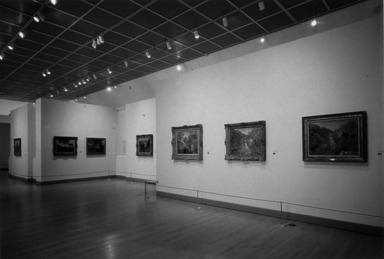
Monet and the Mediterranean, October 10, 1997 through January 4, 1998 (Image: PSC_E1997i025.jpg Brooklyn Museum. Justin van Soest,er photograph, 1997)
Monet and the Mediterranean
-
July 1, 1997
A major international loan exhibition will assemble for the first time more than 60 little-known paintings by the great French Impressionist Claude Monet (1840–1926) executed during three trips to the French and Italian Rivieras in 1884 and 1888 and to Venice in 1908. It will be presented at the Brooklyn Museum of Art October 10, 1997 through January 4, 1998. Monet and the Mediterranean, will include several series that have never before been seen together. Assembled from public and private collections worldwide, many of the paintings have been inaccessible to students as well as the general public.
Monet and the Mediterranean is organized by the Kimbell Art Museum in Fort Worth, in association with the Brooklyn Museum of Art. The exhibition is supported by an indemnity from the Federal Council of the Arts and the Humanities.
The exhibition at the Brooklyn Museum of Art is sponsored by The Chase Manhattan Bank. Major support is provided by The Florence Gould Foundation.
In Bordighera and Antibes, Monet began to work in what has become known as his “serial procedure,” in which he executed more than one picture of a subject from a similar vantage point, but under different circumstances. In some cases the divergences were formal[,] such as size, finish, or chromatic scale. In others the differences were objective, among them weather, lighting, the condition of the sea, or subjective renderings modified by the artist’s mood.
Monet and the Mediterranean will include several such series, among them his views of the olive groves of Bordighera, those of a stand of pines in Cap d’Antibes, and a series of the Ducal Palace in Venice, including one from Brooklyn’s permanent collection.
Monet’s first exposure to the Mediterranean was in late 1883. Weary after completing a commission of six decorative panels for a luxurious Paris apartment, he set off with Renoir to visit the Riviera and Monaco. Fascinated by what he saw, he returned alone in January 1884 to the Italian fishing village and resort of Bordighera and to the Sasso Valley. Over the course of some ten weeks he worked obsessively to produce 35 landscapes, one portrait, and two still lifes. Enroute back to Paris he stopped in Menton for another two weeks where he painted an additional eleven works.
[two repeated paragraphs deleted]
This experience introduced important changes in Monet’s work. “In the exotic, wild, exuberant aspects of the South, he discovered a source of profoundly challenging new pictorial problems. This challenge drew from him some of the most powerful, resonant, and innovative painting he had ever produced—work that went well beyond Impressionism,” writes Joachim Pissarro, the author of the book that accompanies the exhibition. Pissarro, who organized the exhibition for the Kimbell Art Museum where he is Chief Curator, is the great-grandson of the painter Camille Pissarro.
In 1888 he returned to the South to spend nearly three months in the fortified town of Antibes where he created 39 paintings. Unlike the dense, chaotic images of wild vegetation that he produced on his first trip, his renderings of Antibes are bright and spare in their composition and focused on the immensity of the sea and sky, a shift of emphasis which marked Monet’s continuing quest for new pictorial limits.
Monet made one last trip away from Giverny to Venice on the Adriatic, one of many seas comprising the Mediterranean. He remained there from September through December, during which time he executed some 125 paintings, although he had at first proclaimed that he was “too old to paint such beautiful things.” Among this remarkable output were groups of Venice cityscapes including paintings of San Marco, San Giorgio Maggiore, Santa Maria della Salute, and various nearby palaces.
In the course of his travels “Monet was like a prospector looking for the biggest pictorial yield,” writes Pissarro. He had little curiosity about the cities and cultures he visited. Rather, his travels were obsessive pictorial searches during which he would often work 12 hour days.
Monet has been the subject of numerous exhibitions in recent years among them Claude Monet: 1840-1926, at the Art Institute of Chicago in 1994; Monet in the ‘90s: The Series Paintings, at the Museum of Fine Arts, Boston, the Art Institute of Chicago, and the Royal Academy of Arts, London, in 1989; and Monet’s Years at Giverny: Beyond Impressionism, at The Metropolitan Museum of Art, New York, in 1978. Nevertheless only a few of Monet’s Mediterranean [pieces] have been included in these recent exhibition[s], in part because so many of these works have remained in private collections and have not even been reproduced in color until the publication of the Monet and the Mediterranean catalogue.
The fully-illustrated publication reproduced more than 200 paintings from Monet’s Mediterranean series, along with commentaries that introduce each group of works. Joachim Pissarro’s essay draws upon Monet’s extensive correspondence with Alice Hoschede[,] [t]he confidante, lover[,] and eventual wife of Monet. Included are critical responses, from the 1880s to the present, these paintings have evoked. The book is published by Rizzoli International Publications in association with the Kimbell Art Museum and will be available in the Museum Shop in a softcover museum edition ($24) and in hardcover ($45).
The exhibition at the Brooklyn Museum of Art has been coordinated by Elizabeth Easton, Associate curator of European Painting and Sculpture.
Dated and timed tickets will be sold for Monet and the Mediterranean. Tickets will go on sale starting June 2 at a cost [of] $8. For more information or to purchase tickets, call the Monet hotline, 1-888-44-MONET. Tickets cannot be exchanged or refunded. Tickets will also be on sale at the Museum. Tickets for members and children five and under are free, but must be reserved in advance for a specific date and time. There will also be an audio tour available.
Brooklyn Museum Archives. Records of the Department of Public Information. Press releases, 1995 - 2003. 1997, 181-187.
View Original -
September 1, 1997
A large-scale video wall composed of twenty-four video cubes measuring two feet by three feet each and installed in the Grand Lobby of the Brooklyn Museum of Art has been created to enhance the Monet and the Mediterranean exhibition, on view October 10, 1997 through January 4, 1998.
The six foot by twenty-four foot digitally programmed wall has been specially commissioned by Museum Director Arnold Lehman and coordinated by Vice Director of Education Deborah Schwartz. It was produced by Robin White of Owen Electric Pictures and designed and programmed by Jon Stolzberg of V-PLEX.
“We are enormously excited by this unusual means of enhancing the experience of visitors to Monet and the Mediterranean by using state-of-the art technology that transforms the standard exhibition video into a highly creative source of information. It is certain to educate and entertain our visitors,” comments Dr. Lehman.
The video wall presentation, entitled Visions of Monet, will take fifteen minutes to view in its entirety. The monitors will explore the life and work of Claude Monet (1840–1926) and introduce visitors to the Brooklyn Museum of Art. Each monitor will present a series of visual segments organized around a specific subject, including a combination of stills, moving images, text, and music.
Monet and the Mediterranean, the first Monet exhibition in New York City in twenty years, presents for the first time sixty-five paintings that the French Impressionist executed during trips to the French and Italian Rivieras and to Venice in the late nineteenth and early twentieth centuries. The video wall will complement the exhibition by presenting archival and contemporary views of the locales of the subjects of the paintings in the exhibition, along with footage of the paintings themselves in order to demonstrate how Monet’s vision transformed the landscapes. Not only will it focus on the locales—the Italian fishing village of Bordighera, Cap d’Antibes, and Venice—it will also explore Monet’s motifs—nature, light, and water. Also included is a chronological presentation of Monet’s life and career, including rare film footage of the artist painting in Giverny. The sections of the video wall that serve as an introduction to the Museum will include stills and videos of the Museum’s galleries and collections. Incidental music by composers who were contemporaries of Monet, such as Rachmaninoff and Debussy, will be a part of the presentation.
Robin White is a television producer and media curator. A partner in Owen Electric Pictures in New York, she has produced for National Geographic Television, City Arts on WNET TV, and for corportions. A media-education consultant, she has worked extensively with museums.
Jon Stolzberg programmed his first video wall in 1986, shortly after the medium was introduced in the United States. Since then he has programmed over two hundred video walls for major corporations and cultural institutions throughout the world.
Monet and the Mediterranean is organized by the Kimbell Art Museum, Fort Worth, in association with the Brooklyn Museum of Art. The exhibition is supported by an indemnity from the Federal Council on the Arts and the Humanities.
The exhibition at the Brooklyn Museum of Art is sponsored by The Chase Manhattan Bank. Major support is provided by The Florence Gould Foundation and CBS 2 (WCBS TV).
Brooklyn Museum Archives. Records of the Department of Public Information. Press releases, 1995 - 2003. 1997, 188-189.
View Original -
December 1, 1997
The exhibition Monet and the Mediterranean at the Brooklyn Museum of Art will be extended by two additional weeks until Sunday, January 18, 1998, through generous additional funding by The Chase Manhattan Bank. The exhibition opened on October 10, 1997, and was originally scheduled to close on January 4, 1998. All sixty-five paintings, which were executed by Claude Monet during three trips to the French and Italian Rivieras and to Venice, will remain through the extension of the exhibition.
The Brooklyn Museum of Art will also expand the hours, effective immediately, of Monet and the Mediterranean, as well as of portions of the first floor, and all three on-site shops, to accommodate the demand for tickets. Monet and the Mediterranean is organized by the Kimbell Art Museum, Fort Worth, in association with the Brooklyn Museum of Art. The exhibition is supported by an indemnity from the Federal Council on the Arts and the Humanities.
The exhibition at the Brooklyn Museum of Art is sponsored by The Chase Manhattan Bank. Major support is provided by The Florence Gould Foundation and CBS 2 (WCBS TV).
“The audience for this remarkable exhibition has greatly exceeded our expectations and has attracted record-breaking crowds from all over the world. We are delighted, by extending the exhibition and lengthening the hours, that it will be possible to make the exhibition available to even more visitors. The BMA is extremely grateful to all of the private and public lenders to Monet and the Mediterranean for making this possible,” commented Museum Director Arnold L. Lehman.
William B. Harrison, Jr., Vice Chairman of The Chase Manhattan Corporation, noted, “Monet and the Mediterranean has offered Chase a wonderful opportunity to continue a long, and exceptionally strong, tradition of supporting the visual arts and to contribute to the thriving cultural life of Brooklyn, where we’ve had a presence for many years. We are thrilled to help extend the life of this exhibition.”
The expanded hours will include opening the Monet exhibition on Monday, December 29, and Tuesday, December 30, from 10 a.m. to 6 p.m., and on New Year’s Day from 11 a.m. to 6 p.m., all days that the Museum would normally be closed to the public.
Monet and the Mediterranean will also open an hour earlier, at 10 a.m., on Saturdays and Sundays, and on Sundays will also remain open an hour later until 7 p.m.
The exhibition will remain open until 8 p.m. on Friday, December 26; Sunday, December 28; Friday, January 2; and on closing day, Sunday, January 18.
Additional information and tickets are available at the Museum or by calling 1-888-44-MONET.
Regular hours for the Brooklyn Museum of Art are Wednesday through Friday, 10 a.m. to 5 p.m.; Saturday, 11 a.m. until 9 p.m.; and on Sunday from 11 a.m. to 6 p.m.
For the run of the exhibition the Museum has created special group packages that include exhibition tickets and lunch at a selection of Brooklyn’s leading restaurants. Special hotel packages are available through a partnership with Marriott, and Amtrak is offering a discount to passengers traveling from Philadelphia to see the exhibition. Special discounts on exhibition tickets are also available to Chase Credit Card and Chase Banking Card (with the Mastercard logo) customers.
Other Brooklyn institutions and restaurants, among them the Brooklyn Botanic Garden and Gage & Tollner restaurant, have reported a surge in business since the opening of Monet and the Mediterranean.
Brooklyn Museum Archives. Records of the Department of Public Information. Press releases, 1995 - 2003. 1997, 193-194.
View Original -
October 1, 1997
Sacha Guitry’s 1952 C[eu]x De Che[z] Nous, which includes 1915 footage of the Impressionist painters, is included in The Impressionists’ Eye: Films About Monet at the Brooklyn Museum of Art from November 1 to December 14. The films are presented in conjunction with the Museum’s current international loan exhibition, Monet and the Mediterranean, which continues through January 4. Tickets for the films are $6; $4 for Museum members, students, and older adults.
Other films include Linnea in Monet’s Garden, an animated story adapted from the popular children’s book of the same title, and Memories of Monet, a narration of the relationship between Monet and the American artist Lil[l]a Cabot Perry.
Monet and the Mediterranean is a major international loan exhibition that comprises sixty-five exceptional paintings by the great French Impressionist Claude Monet (1840-1926) produced during his trips to the Italian Riviera (1884), the French Riviera (1888), and Venice (1908). These paintings, from public and private collections, have seldom, if ever, been shown to the public, and many have never been reproduced in color. They reveal Monet’s fascination with the luxuriant and dazzling landscape of the Mediterranean and his obsession with perfecting the task of “painting light.” The exhibition includes several series of works that have never before been seen together, including his views of the olive groves of Bordighera, the pine trees on Cap d’Antibes, and the Ducal Palace in Venice. Each of these series represents a style of painting markedly different from the styles with which Monet had established his reputation in the north. As he attempted to reconcile the Mediterranean’s architecture with its lush and exotic landscape, Monet created some of the most beautiful and visually complex paintings of his career.
The Impressionists’ Eye: Films About Monet
Iris and B. Gerald Cantor Auditorium
Tickets are $6; $4 for Museum members, students, and older adults.
Saturday November 1
1 p.m.
Linnea In Monet’s Garden (1992).
Directed by Lena Anderson and Christina Bjork. 16mm. 30 min.
Adapted from the children’s book of the same title by Christina Bjork. Animated story about a young Swedish girl, Linnea, who travels with her neighbor to France to visit the famous gardens of her favorite artist, Claude Monet, at Giverny. Blends animation and live action with photographs of Monet and reproductions of his paintings.
6 p.m.
Avec Claude Monet (1966).
Directed by Dominique Delouche. 16mm. 22mm.
Relates stages in the life and art of French [I]mpressionist painter Claude Monet to the places where he lived and worked.
Memories Of Monet (1984).
Directed by Meredith Martindale and Toby Molenaar. 16mm. 28 min.
First-person narration evokes the friendship between Claude Monet and the American artist Lilla Cabot Perry, who, with her husband, spent ten summers at Giverny between 1889 and 1909. Blends location shots of Monet’s gardens at Giverny with photographs of paintings he executed from 1889 until his death. Narrated by Claire Bloom.
Ceux de Chez Nous (1952). Directed by Sacha Guitry. 40 min.
The film features footage from 1915 of such French artistic figures as Claude Monet, Edgar Degas, Camille Saint-Saëns, Anatole France, Sarah Bernhardt, Pierre-Auguste Renoir and his son Jean, Auguste Rodin, and Edmond Rostand.
Sunday November 2
1 p.m.
Linnea In Monet’s Garden (repeats)
Saturday November 8
1 p.m.
Linnea In Monet’s Garden (repeats)
6 p.m.
D’ici à là et de là à ici (1986). Directed by Jean-Loup Hirat. Video. 5 min.
A brief look at places associated with French painter Claude Monet, at the materials painters use, including palette, brushes, and pencils[,] and at the forms and values of painting, such as line, curve, square, and black and gray.
Four Views of a Landscape (1976). Directed by Sheila Graber. 16mm. 4 min.
Uses animation in a humorous manner to present four interpretations of a landscape theme by painters Claude Monet, Vincent van Gogh, John Constable, and Joseph Mallord William Turner.
Monet In London (1974). Directed by David Thompson. 16mm. 18 min.
Claude Monet’s devotion to “the fog that gives London its fullness” brought him, during the winters of 1899 and 1901 to the Savoy Hotel[,] where he began the Thames series. Live action footage of the Thames and contemporary photos of London set the paintings in context. Narrated by Michael Gough.
The Open Air: Monet and the Impressionists (1979). Directed by Wolf Arnold. Video. 28 min.
Traces the origins of French Impressionist painting during the second half of the nineteenth century by focusing on one of its chief artists, Claude Monet, his physical environment, some of his early works, and his first teacher, Eugene Boudin. The film also examines the roots of Impressionism: the reaction against the formality of “official art,” the escape from studio painting into open-air painting, the response to the threat to painting posed by the new art of photography, and the revived interest in light in all its forms.
Palettes: Japanese Bridges By Claude Monet (1991). Directed by Alain Jaubert. Video. 26 min.
Part of a series in which each episode tells the story of one painting using scientific methods and special video effects. The film depicts how Monet shaped the landscape, gardens, and waterlily ponds at Giverny into the work of art that he then portrayed in his paintings.
Sunday November 9
1 p.m.
Linnea In Monet’s Garden (repeats)
Saturday December 13th
1 p.m.
Linnea In Monet’s Garden (repeats)
6 p.m.
Ceux de Chez Nous (repeats)
Memories Of Monet (repeats)
Open Air (repeats)
Sunday, December 13
3 p.m.
Ceux de Chez Nous (repeats)
Memories Of Monet (repeats)
Open Air (repeats)
Brooklyn Museum Archives. Records of the Department of Public Information. Press releases, 1995 - 2003. 1997, 190-192.
View Original -
June 1, 1997
The Brooklyn Museum of Art Shops will offer a wide range of Monet-inspired items when the Museum presents the upcoming exhibition Monet and the Mediterranean, which opens at the Museum on October 10, 1997. Included will be boxed sets of notecards, posters, postcards, jewelry, ceramics, painting kits, and many other Monet products.
A full-color catalogue of Monet and the Mediterranean, by Joachim Pissarro, organizing curator and great-grandson of painter Camille Pissarro, will also be available. It features 105 paintings from Monet’s travels to Venice and the coasts of Italy and France with cityscapes, seascapes, lush palm trees, and olive groves. The softcover edition of the catalogue is $24 (Museum members, $21.60), and the hardcover edition is $45 (Museum members, $39.50).
All-cotton T-shirts depicting one of Monet’s vibrant landscapes will be available for $15 (Museum members, $13.50). The shops will also feature cotton baseball caps in assorted colors that bear the signature of the artist ($15; Museum members, $13.50).
The Doges’ Palace in Venice, a painting in the collection of the Brooklyn Museum of Art that appears in the exhibition, is featured on several gift products such as a 24["] x 36” poster ($15; Museum members, $13.50), a whimsical mousepad ($17; Museum members, $15.30), a set of twenty notecards with three other Monet images ($12.95; Museum members, $11.65), a hand-painted keepsake box ($22; Museum members, $19.80), and a coffee mug ($7; Museum members, $6.30).
Also available in the Museum Shops will be a Monet umbrella ($35; Museum members, $31.50) and totebag ($25; Museum members, $22.50), which feature a detail from one of Monet’s Venetian canals, and a graceful gold-tone gondola pin ($19.95; Museum members, $17.95).
Other Monet and the Mediterranean items featured in the shops will be puzzles, calendars, Monet screen savers, Monet-inspired stained glass windows, jewelry, holiday cards, and Mediterranean-influenced glassware and ceramics.
All of these products will be available in both the Brooklyn Museum of Art’s Shop and at the Museum Shop at Equitable Center, located at 787 Seventh Avenue. Assorted Monet-related children’s items will be sold at the artSmart® Children’s Shop in the Brooklyn Museum of Art.
Monet and the Mediterranean is a major international loan exhibition of 71 paintings by the great French [I]mpressionist Claude Monet (1840–1926) executed during three trips to the French and Italian Rivieras in 1884 and 1888 and Venice in 1908. It will be presented at the Brooklyn Museum of Art from October 10, 1997, through January 4, 1998. Monet and the Mediterranean, assembled from public and private collections worldwide, will include several series of paintings by the artist that have never before been exhibited together.
The exhibition at the Brooklyn Museum of Art is sponsored by The Chase Manhattan Bank. Major support is provided by The Florence Gould Foundation.
Dated and timed tickets are being sold for Monet and the Mediterranean. For more information or to purchase tickets, call the Monet hotline at 1-888-44-MONET.
Brooklyn Museum Archives. Records of the Department of Public Information. Press releases, 1995 - 2003. 1997, 177-178.
View Original -
July 1, 1997
THE ITALIAN AND FRENCH RIVIERAS, 1884
When Claude Monet (1840–1926) made a brief tour of the Mediterranean coasts of France and Italy with Renoir in 1883, he was confronted with challenging new pictorial problems. In early 1884, he set off for the region again on his own and produced in the picturesque Italian seaside town of Bordighera a series of works that he considered completely new. In Monet’s views of the small village and its surroundings Bordighera appears overcome by wild vegetation and pressed against the sea or the mountains. The series includes paintings of the Moreno garden and its groves of rare and spectacular species of palm trees, the alpine countryside of the valley of Sasso Vintimigilia and the valley of the Nervia, and the town of Dolceacqua. Monet ended his Mediterranean sojourn on the French coast, where he painted a series of views of Cap Martin, then relatively unknown, and of Monte Carlo, which he considered the most beautiful spot on the French Riviera.
ANTIBES, 1888
Monet again spent late winter and early spring on the French Riviera four years later. He took up residence for about twelve weeks in the small fortified town of Antibes. The group of works he painted there of the pink and golden silhouette of the town and its old fort protruding into the bay, of Antibes seen from the gardens of LaSalis, and of the nearby coastal areas, such as the beach of Juan-les-Pins and the rock formations of Cap d’Antibes, are bright and extraordinarily colorful. They represent Monet’s attempt to portray in a new pictorial vocabulary the plain immensity of the sea, the depth of the sky, the Alps at the horizon.
VENICE, 1908
More than twenty years later Monet traveled for the last time to the Mediterranean, to the eastern coast of Italy, where he undertook a group of Venetian cityscapes. They were to be his last series of works outside his home in Giverny. The Venice series is a group of smooth, fully integrated, masterfully composed works. Painting the Doges’ Palace, San Giorgio Maggiore, the Grand Canal, Santa Maria della Salute, and various adjacent palaces, Monet turned Venice into his own outdoor studio. He depicted the ornate facades of Venice under the intense light of the Adriatic tempered by the surrounding haze of the canals.
Brooklyn Museum Archives. Records of the Department of Public Information. Press releases, 1995 - 2003. 1997, 179-180.
View Original

